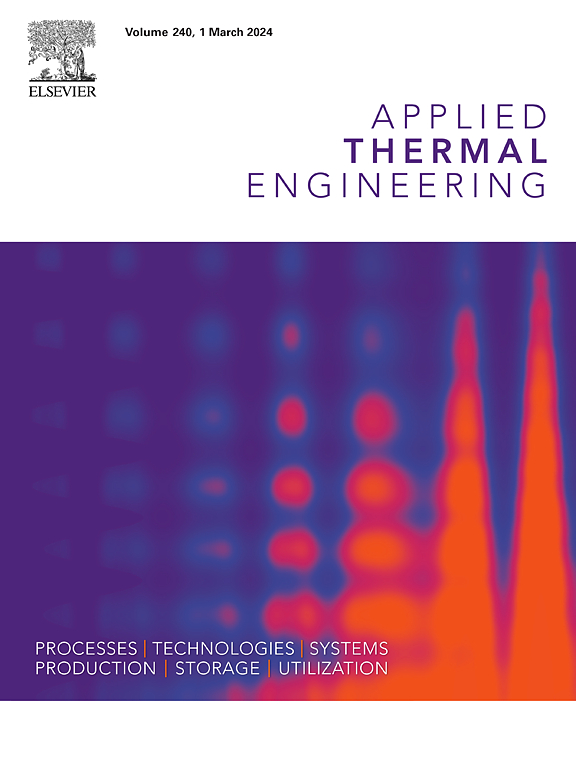Experimental study of flow physics and heat transfer across the matrix subchannels
IF 6.1
2区 工程技术
Q2 ENERGY & FUELS
引用次数: 0
Abstract
Matrix or latticework cooling is commonly known for offering an excellent heat transfer performance and structural strength to modern gas turbine’s blades. Detailed fluid flow studies inside matrix subchannels are still very limited, mainly due to experimental challenges. This work is a forward step in this theme in which particle image velocimetry (PIV) and Liquid Crystal Thermography (LCT) is used to capture the complex flow patterns and heat transfer across the matrix subchannels at Reynolds numbers 800 and 6500. The outcome of the study shows that a swirl commences at the entry of subchannels, which evolves in terms of a full-scale streamwise vortex in downstream. The evolved vortical structures deteriorate during turning and impingement and subsequently re-develop while propagating through subchannels. Mean turbulent kinetic energy () distribution shows that turning and impingement offer a sharp turbulence augmentation. i.e., the values after first turn shows an increment of ∼175 % (for Re = 800) and ∼100 % (for Re = 6500). The average augmentation Nusselt number () is found to closely correlated with , consequently the first turning offers an increment ∼125 % (Re = 800) and ∼200 % (Re = 6500) in .
求助全文
约1分钟内获得全文
求助全文
来源期刊

Applied Thermal Engineering
工程技术-工程:机械
CiteScore
11.30
自引率
15.60%
发文量
1474
审稿时长
57 days
期刊介绍:
Applied Thermal Engineering disseminates novel research related to the design, development and demonstration of components, devices, equipment, technologies and systems involving thermal processes for the production, storage, utilization and conservation of energy, with a focus on engineering application.
The journal publishes high-quality and high-impact Original Research Articles, Review Articles, Short Communications and Letters to the Editor on cutting-edge innovations in research, and recent advances or issues of interest to the thermal engineering community.
 求助内容:
求助内容: 应助结果提醒方式:
应助结果提醒方式:


